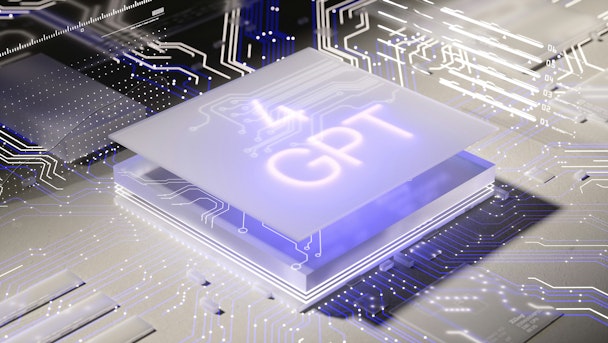AI is already helping marketers do more, by augmenting (not replacing) them
Goldilocks wouldn't have worried that AI was too hot or too cold, says Simon Collister of Unlimited. When it comes to best using the technology in marketing, the key is to find the sweet spot.

Marketers shouldn't worry about AI replacing them, says Simon Collister / d koi via Unsplash
There’s a whole lot being written about AI – its impact on the future of the marketing industry, the ethics of generative AI scraping, and of the technology learning from the internet’s open content. Not to mention the hilarious/worrying hallucinations that we’re seeing merge. The list could go on.
But if we descend from the higher-level opinions of “isn’t that amazing/good/bad/ugly” how are the more granular examinations of where AI is – and gen AI in particular – panning out in reality?
From my experience at Unlimited, we’re finding that the day-to-day reality of AI in marketing is very much gravitating towards using it to ‘do less to achieve more’.
And that’s good news for several reasons – human capabilities, commercial, strategic – which it’s worth exploring in detail.
For best results, use AI to free up human talent
One area where we have been deploying gen AI is in helping clients to rapidly analyze customer survey data. The theory is that AI can give us much faster and potentially more accurate (or at least, more objective) results.
We have been working with a client to test this theory using our AI-powered insight platform, Luca. The results have been an overwhelming success.
Given the importance (and value) of the project outputs, we started in full due diligence mode: poring over live results and comparing these with human analyst’s output for three months to assess quality and accuracy; algorithms were tweaked and updated and analyses re-run.
It was detailed and intense work, but worth it. The client and their lead analyst were hugely impressed with the quality of the output and suggested it might free up days of analysis time. Crucially, this would enable their analysts to re-deploy to higher-value work. This proves AI is about augmenting, not replacing, humans.
And that’s an important point.
Advertisement
AI should add, not subtract, to the value of your work
Gen AI is not only good news for clients but also a good sign for troubled chief execs, chief revenue officers, and anyone else in a C-suite position worried that as the technology becomes more widely adopted, clients will start asking for an ‘AI discount.' Rather than perceiving the use of AI as a time-saving technology that reduces the billability or recoverability of fees, clients see added value – and even say they’re happy to pay for the service and to pay a premium.
But it’s not just on the data-crunching side of marketing that we’re seeing AI transform day-to-day practice. Our creative teams are also embracing the opportunities gen AI affords.
For example, using our LUCA platform planners can identify a target audience for a campaign and in minutes run an analysis using a sample of the audience’s social content. This analysis deploys AI to generate a psychographic profile – essentially an AI-powered persona of the audience which in turn can inform creative development.
Advertisement
Taking AI to the next level in your client offering
But the beauty of AI is that we can ‘stitch’ different algorithms together – creating incremental value. So, for example we can also take the attributes and qualities of an audience persona and connect it to another gen AI engine that compares the persona with a behavioral science ‘cheat sheet’. This automated process can rapidly create a basic creative brief, effectively revealing in minutes that an audience with a particular psychographic ‘fingerprint’ is best influenced or engaged by dialing up or down particular creative elements.
Again, such a process isn’t about replacing creative strategists but helping them to get to an initial proposition or concept faster. Reducing time-to-output for more valuable human input is the order of the day, not replacing the human specialist altogether.
But, the cynics reading this might then argue: “Ah, yes – but what happens when you plug the AI-generated creative brief into a gen AI artworking tool, such as Dall-e or Midjourney? That’s when the creatives will start feeling the AI heat.”
Suggested newsletters for you
A great 'starter for 10,' but AI doesn't always make the final pitch
But, we’ve tried it and used the results for pitch development. Again, the practical response from our experience so far is that while it’s a useful ‘starter for 10,’ gen AI artwork rarely makes the final pitch.
It’s a really useful way to get the creative development process started but it’s also always refined and built on by humans. Close, but not a replacement just yet.
And that is the reality in early 2024 of the practical deployment of AI in marketing. Like many things in life, as humans we tend to push discussions and interpretations of new phenomena to the extremes – something is often more easily comprehended when we identify the worst or best-case scenarios. Reality, as Goldilocks discovered, tends to find a sweet spot somewhere in the middle.
Content by The Drum Network member:

UNLIMITED
UNLIMITED is the UK’s leading conversion agency. Our mission is to create genuine business advantage for clients, and we do this by uncovering behaviour-led insights...
Find out more
